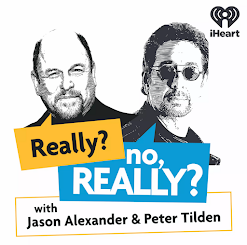There are lots of people with air raid sirens of their own, bought from collectors and eBay, and YouTube has plenty of videos of the sirens being displayed and tested.
Things I have learned during pleasant searches on YouTube and beyond is that these things are robust and heavy and need an oomph-load of electricity to get going and to get them up to the right speed for that spine-chilling siren sound.
I'd 'heard of' three phase power (electricity supply, generally used industrially) but had no real idea what it is - not the sort of thing you have coming out of your living room sockets and so if you have a siren at home the best you're going to get from it in terms of sound is what you can get by starting it with a drill bit rotating at a decent speed. However all this will do will make the rotors spin, but it won't warn anyone of any impending doom, perhaps just mild peril.
Siren started with drill - mild peril Siren with three phase supply - doom!
Since I know so little about electricity supply, voltage and frequency (and about sirens) there's still a lot still to learn but this comment on this YouTube video intrigued me.
"If you want the classic low pitch British air raid sound you would want to get a convertor to take the power supply from 60 Hz to 50 Hz, otherwise it will sound like the Federal 2T22 or 3T22 siren, which in turn would sound like a Castle Castings siren if run on 50hz."Gosh. Does this mean that the main differencess in sound between US sirens (eg the Federal 2T22 / 3T22) and UK ones (eg Castle Castings) are down to the frequency at which their electricity supply operates and the pitch of the siren is set by this frequency?
Also as a child I discovered that my mini two-battery fan could spin a heck of a lot faster if I sellotaped more batteries together, so it doesn't surprise me that 'more power' changes the rotation speed and so the pitch, but the frequency idea took me by surprise.
I've also learned that they have some pretty scary-looking sirens in the US.
Allertor 3T22
T135
I can't embed this one but it spins round and in the test emits three different signals, the last one is the scariest I think.
You might also like
South Shields meets the sublime: A report on the Foghorn Requiem (24 June 2013) by Sarah Angliss who went to hear the Souter Lighthouse foghorn play out for (probably) the last time, as part of a musical event





Hi Jo,
ReplyDeleteThe motor will rotate at the frequency of the supply, maybe a little slower under load. So a 50 Hz supply makes the motor rotate at a nominal 3000 rpm, a 60 Hz supply would give 3600 rpm. The tone emitted by the siren will be the rotational rate multiplied by the number of slots in the siren stator (outer ring).
There is a WW2 air-raid siren at the D-Day Museum in Southsea (Portsmouth, England). It has two sirens driven by one motor, like your Carter example in green above. The stators have 9 and 11 slots, so when run from the usual 50 Hz UK electricity supply the tones will be 450 and 550 Hz respectively.
Thank you Colin - your helpful comment is very welcome! :)
Delete